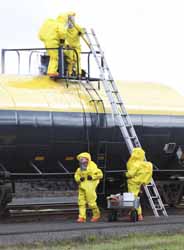Improved public and infrastructure safety
The 'ASPIS - Autonomous surveillance in public transport infrastructure systems' (ASPIS)(opens in new window) project was initiated to resolve limitations and issues presented by classical, centralised surveillance tools. The overall aim was to design a system providing prompt and wide coverage of events potentially threatening public safety. Particular emphasis was also placed on cost-effectiveness and issues related to citizen privacy. The project has been conducted across four main areas: (1) operational and functional requirements analysis, (2) technical analysis on the state of the art and on available solutions, (3) system design and development, and (4) demonstration. For system requirements and functional specifications, ASPIS research and activities involved user cases and the extensive engagement of end users (covering underground rail operations and passenger ferry operations). Technical analysis included the identification and review/comparison of existing technologies that could fulfil the proposed system's requirements. Researchers used results to inform the design, development and feasibility testing of ASPIS system components. The architecture of the ASPIS Monitoring Device (AMD) was designed, and end-user inputs were taken into account for parameters related to technologies and device interfacing, as well as for efficiency of existing communications platforms. System integration tests concerned, among others, the connection between AMDs and between an AMD and the ASPIS Central Station (ACS). This activity made it possible to highlight areas in need of improvement so as to proceed with testing and validation, and then with demonstration. Researchers carried out two demonstrations — one subway and one maritime — using AMDs and the ACS system component. The demonstrations resulted very satisfactory: the project team reported that the outcomes validated their concept as fulfilling the system's requirements. The ASPIS system is particularly geared toward crisis management in catastrophic conditions. Beyond video surveillance across multiple types of visual recording devices, it innovates through the provision of added features. These include real-time communication from inside tunnels, and hardened components able to resist a blast or fire. As such, project efforts have enhanced the ability of emergency responders to better and more quickly assess a catastrophic event affecting public transport systems, and the number of potential victims. Project outcomes contribute to improved rescue operations, critical for reducing associated fatalities and infrastructure damage.





